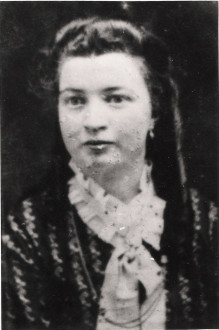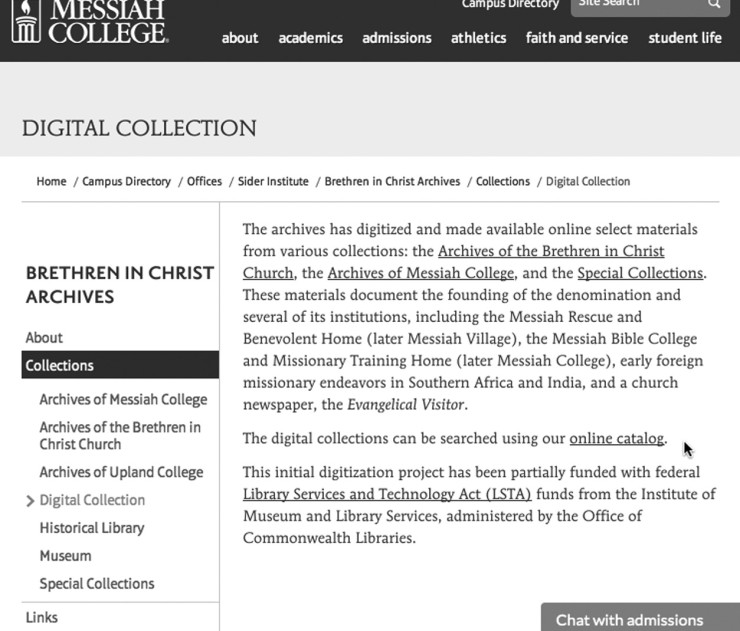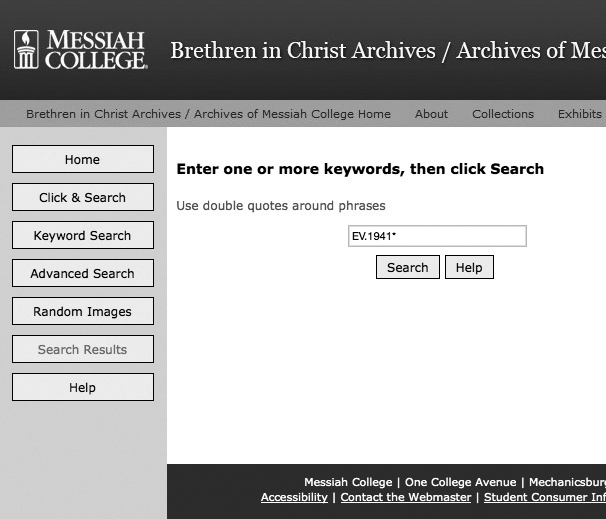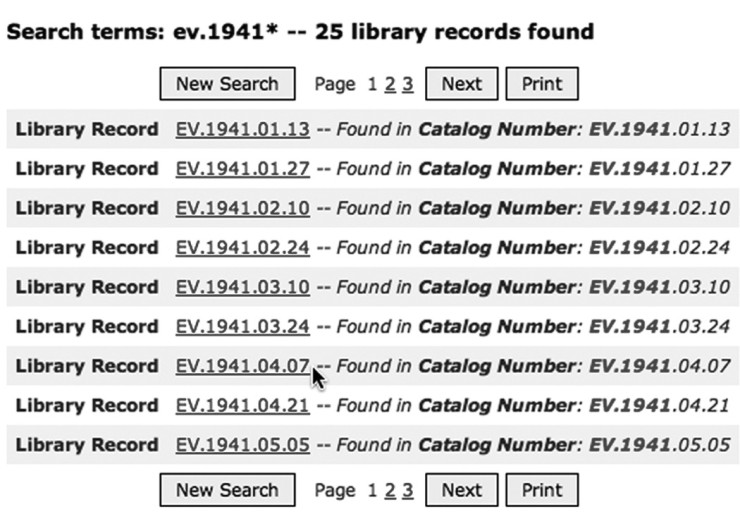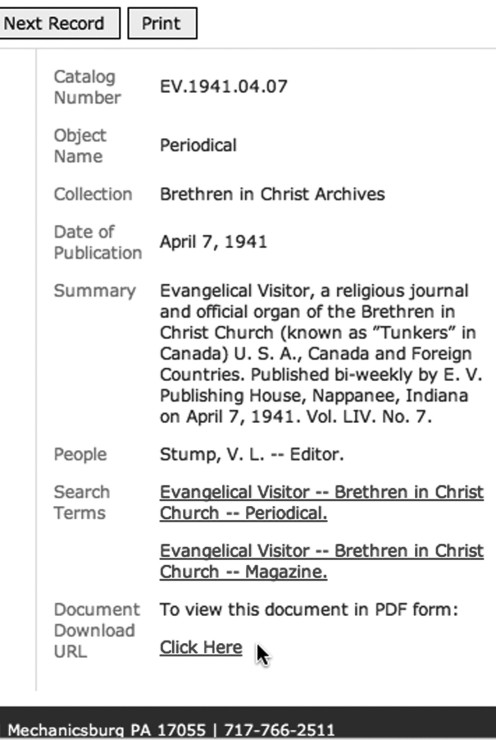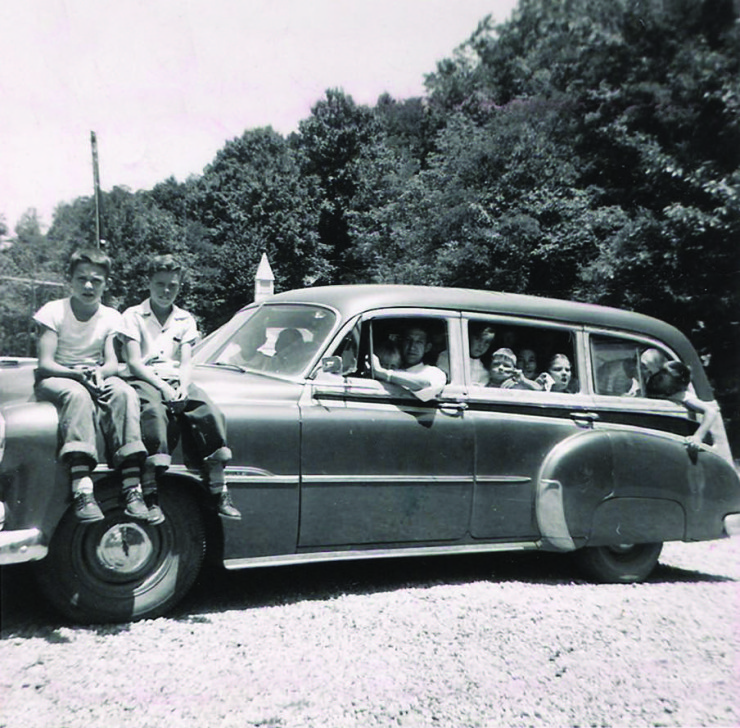Welcome to the first issue of “History Matters,” our renamed and completely redesigned newsletter! We hope you like this dynamic new look.
Of course, “History Matters” is only one element in our rebranding of the Historical Society and our redesign of its publications. You were introduced to the Society’s new logo last summer. This year, the April edition of Brethren in Christ History and Life will introduce the redesigned journal. In addition, we have launched a brand new and much more comprehensive and functional website.
The logo, redesign of our publications, new website, and social media outlets are all part of the Historical Society’s larger effort to create a strong visual identity for the Society—one that we hope will appeal to long-time members as well as a new generation of historically minded people.
We encourage you to check out our new website. Historical Society members now have access to the entire journal online as well as in print. Non-members have access to one featured article from each journal, along with the editorial and the table of contents. New members will be able to join online, and members will be able to renew their memberships. A gallery of historical photos is also featured. Devin Manzullo-Thomas’ successful blog, “The Search for Piety and Obedience,” is now part of our website. Visitors to the site can comment on journal and newsletter articles, respond to the blog (and perhaps even write guest posts), and perhaps even help us identify people and places in photographs. We hope that the website will encourage a more interactive and dynamic conversation about the history and life of the Brethren in Christ Church. Just one note: while most features of the website have been completed, it is a work in progress, and some features are still being refined.

